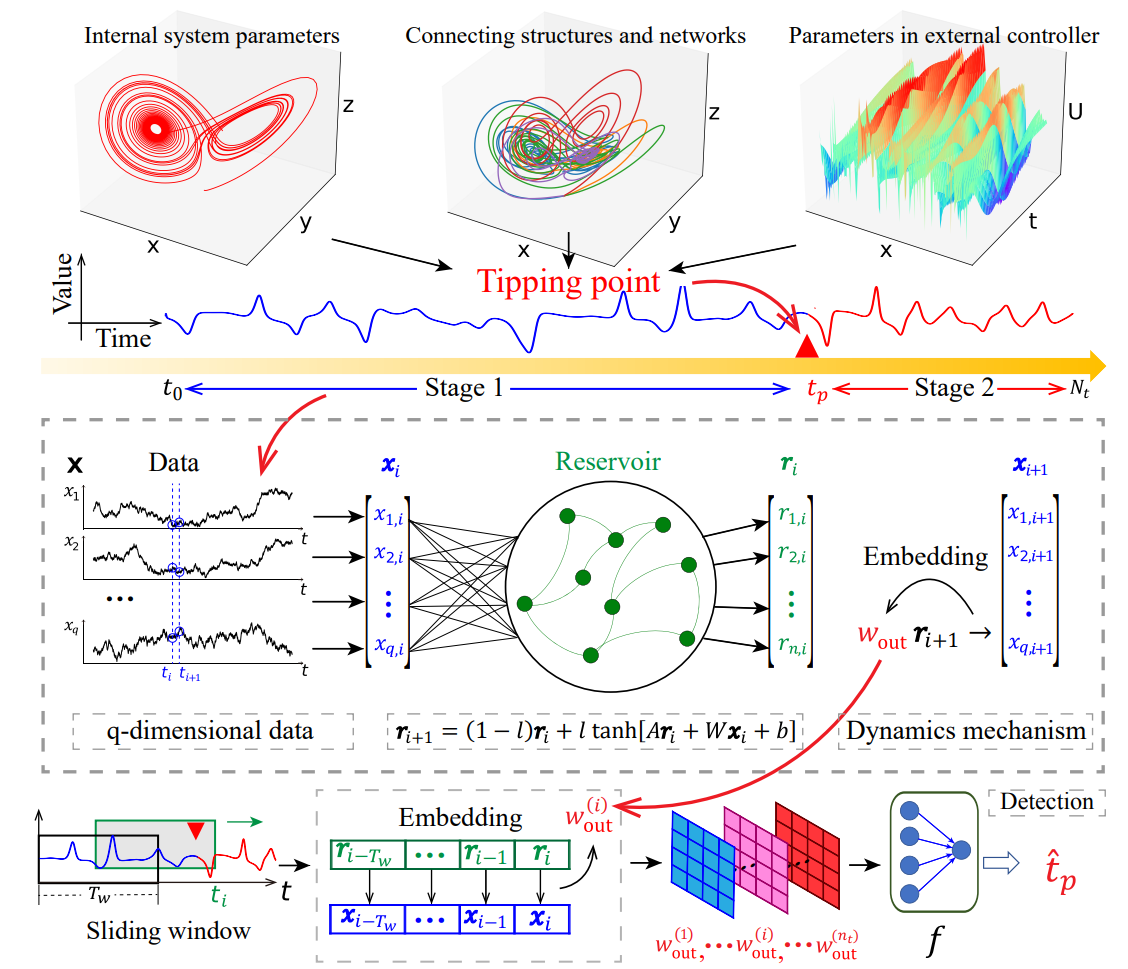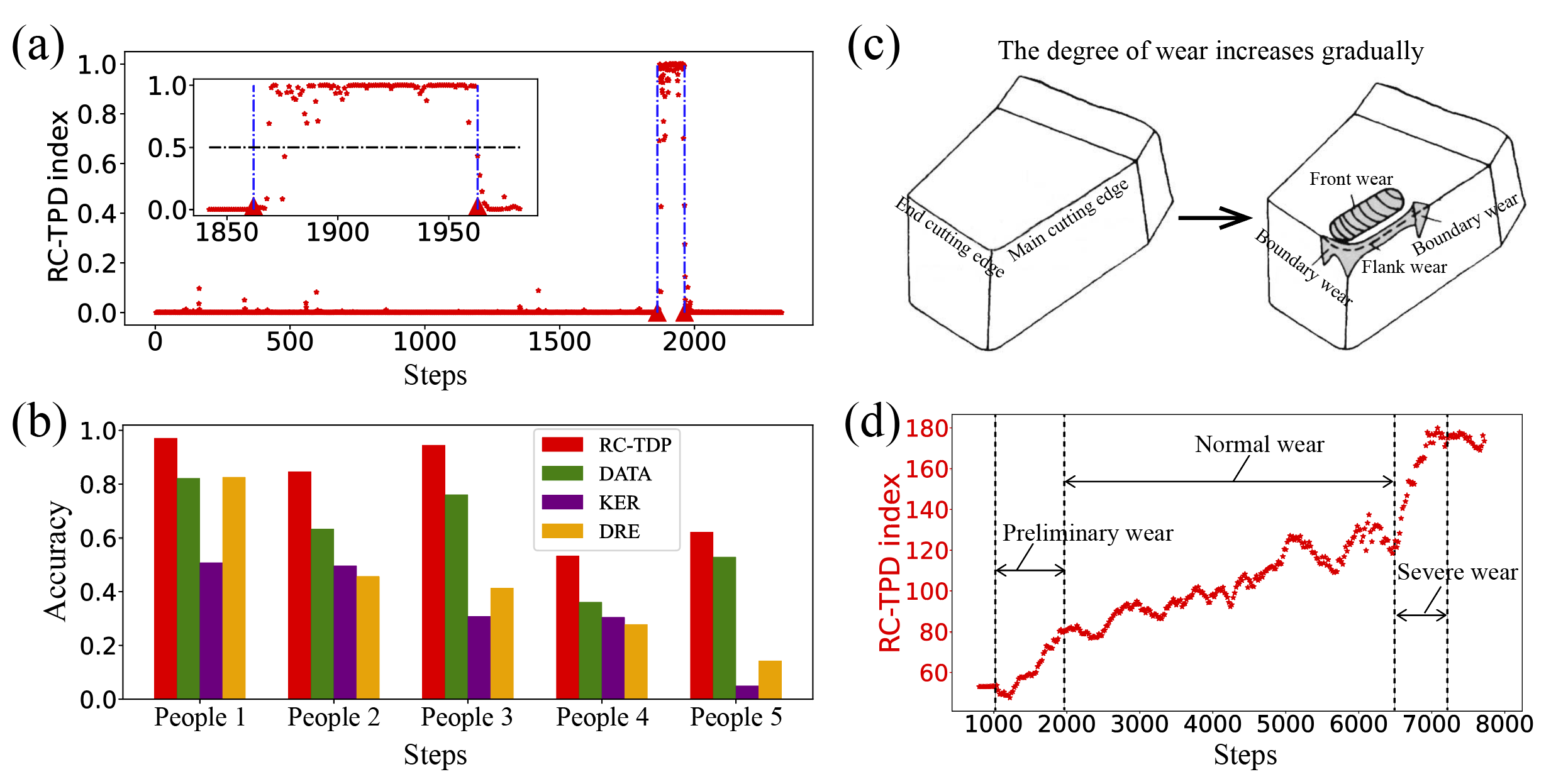
On July 3, the research team led by Lin Wei and Zhu Qun from Research Institute of Intelligent Complex Systems of Fudan University, along research team led by Zhao Chengli from the National University of Defense Science and Technology, developed a model-free tipping point detection framework for complex dynamic systems based on the reserve pool calculation method. This innovative approach accurately identifies critical tipping points in observed time series data without any prior knowledge of complex systems. The proposed method has been successfully tested across classical physical systems, biological systems, and real-world complex systems, demonstrating its effectiveness and robustness in detecting critical points. It provides valuable insights into understanding and predicting the behavior of complex dynamic systems. These significant findings have been published in the Research journal under the title Tipping points detection using reservoir computing.
Recently, tipping point detection has become one of the focal research topics in complex dynamical systems. Related detection approaches match urgent needs arising in bioinformatics, climate, economics, and many other fields. In this research, the tipping point is considered as the moment when the underlying dynamics of the system undergo changes due to internal structural shear or/and variations in key parameters.
In real systems, due to highly nonlinear dynamics and the influence of random noise, the system often exhibits extremely complex dynamic behavior. Additionally, only time series data for systematic observations is accessible. In such a situation, tipping points detection directly using traditional statistics-based methods or machine learning methods based solely on time series data becomes quite challenging. To address this issue, the researchers proposed a framework for tipping points detection in complex dynamic systems based on reserve pool calculation.
Reservoir computing is a method for reconstructing complex systems that is suitable for processing time series data. It can learn the characteristics of system dynamics from observed data. Based on this approach, the authors propose a data-driven machine learning framework (shown in Figure 1). The core concept of this framework is to encode information from the time series into output layer weights of the reserve pool network and establish a mapping relationship between these weight features and system changes through machine learning techniques. Specifically, a sliding window strategy is adopted by the authors to detect critical points in real-time within the system. By considering both dynamic characteristics corresponding to each sliding window moment and their predicted change point probability/change intensity, it becomes possible to obtain a curve depicting change point probability/change intensity over time and further identify critical points within the system.

Fig 1: Model frame diagram of tipping point detection
In order to assess the efficacy of this approach, the researchers conducted experiments in both simulation and real systems. Initially, within the simulation system, time series data with a critical turning point was generated by manipulating internal parameters, structure, and external control of the system. Subsequently, an experiment on detecting the critical point was performed. The experimental findings demonstrate that the proposed method effectively detects pivotal turning points within the system. Figure 2 illustrates these experimental results obtained from the Lorentz system. It is evident that this method not only accurately identifies the location of critical points but also predicts their intensity of change with significantly superior performance compared to baseline methods.

Fig 2: Experimental results of the Lorenz system. (a) Change of detection index with time in a test data. (b)-(c) The average detection errors obtained by using different methods under different data conditions. (d) The relationship between the prediction effect and the detection effect in different reservoir settings.
Additionally, the researchers conducted experiments in practical systems such as character segmentation, EEG data, and tool wear data, yielding favorable outcomes. Figure 3(a)-(b) illustrates the experimental results of seizure detection using a 23-dimensional EEG dataset, demonstrating the accurate and timely identification of onset time through this method. FIG. 3(c)-(d) presents the experimental findings of tool wear degree detection utilizing a 7-dimensional sensor dataset. It is evident that the proposed approach in this paper can sensitively depict the tool wear curve and further discern criticality between different states.

Fig 3: Detection performances using EEG data and tool wear data. (a) Detection of seizures using EEG data. (b) Comparison of detection accuracy of different methods in EEG data experiment. (c) Tool wear diagram. (d) The assessment of tool wear in a continuous operating environment.
The method proposed in this researcher has several aspects worthy of further investigation. For instance, the method demonstrates exceptional performance in terms of recognition rate, making it suitable for systems dealing with parameter drift. Additionally, it proves valuable in detecting significant changes near critical deceleration phenomena. Moreover, the framework has the capability to infer when there is a change in subsystem structure, enabling its combination with one-way or causal network reconstruction methods to identify temporal structures within the system. Lastly, the framework possesses high robustness and is well-suited for real-world applications, offering extensive potential for addressing various scenarios and tasks.
Dr. Li Xin from National University of Defense Technology serves as the first author of this paper while Dr. Zhu Qunxi from Fudan University and Associate Professor Zhao Chengli from National University of Defense Technology are co-corresponding authors. Professor Lin Wei from the Laboratory of Intelligent Complex Systems provided invaluable guidance and suggestions for this research project. This study received funding and support from China Postdoctoral Science Foundation, National Natural Science Foundation of China, Shanghai Artificial Intelligence Laboratory, and Shanghai Municipal Science and Technology Major Projects
Paper Link: https://spj.science.org/doi/10.34133/research.0174











